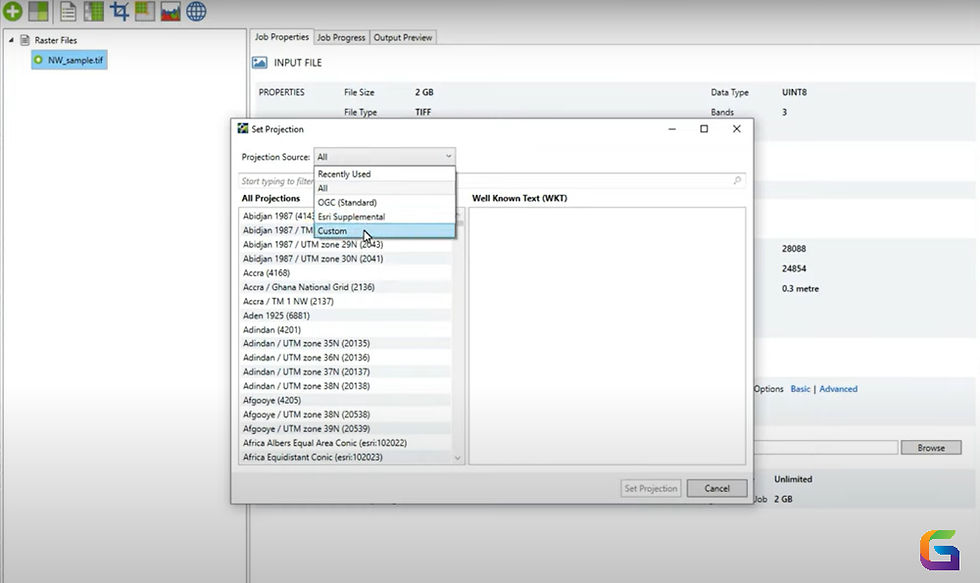GIS Pros Prefer MrSID: Better Performance Than COG for Big Raster and Satellite Datasets
- utkalsharma
- Jul 30
- 2 min read
Rapid access to large raster and satellite datasets and effective storage are critical in the field of Geographic Information Systems (GIS). GIS experts are always looking for file formats that offer better performance without sacrificing compatibility or quality. MrSID (Multiresolution Seamless Image Database) is becoming more and more popular among the alternatives since it outperforms Cloud Optimized GeoTIFF (COG) in a number of crucial areas, particularly for large-scale raster and satellite imagery.

What is MrSID?
LizardTech (now a part of Extensis) created the proprietary image compression standard known as MrSID. Large geographic picture compression and streaming are its primary uses. MrSID is a well-liked option in sectors including urban planning, defence, and environmental monitoring since it offers quick display performance, multi-resolution access, and lossless and lossy compression.
What is a Cloud Optimized GeoTIFF (COG)?
The open-source COG format is derived from the common GeoTIFF format. It uses internal tiling and overviews to enable partial data access over the web, making it ideal for cloud storage and streaming. In cloud-native GIS setups, COGs are being used more and more for data exchange.
Why GIS Professionals Prefer MrSID Over COG
When working with big raster datasets, GIS professionals frequently choose MrSID for the following main reasons:
Superior Compression Efficiency
MrSID provides remarkable compression ratios, frequently 20:1 or higher, without sacrificing much of the visual quality.
MrSID files are usually smaller than COG files, which saves disk space and speeds up transfers.
Faster Streaming and Rendering
Instant pan and zoom capabilities are made possible by MrSID's built-in support for multi-resolution pyramids.
This results in speedier rendering performance, particularly when working with large mosaics or on devices with reduced bandwidth.
Reduced Bandwidth Usage
Compared to COG, which may transport larger blocks of data, MrSID consumes a lot less bandwidth because it simply streams the necessary resolution and region of interest.
Strong Support in Professional GIS Software
Prominent GIS programs like Global Mapper and Esri's ArcGIS come with built-in support for MrSID.
This guarantees interoperability with cutting-edge geospatial technologies and permits smooth integration into organizational workflows.
Support for Large and Complex Datasets
Terabytes of image size are no problem for MrSID to handle.
When COG May Be a Better Fit
Even if MrSID provides numerous benefits, COG has a role as well:
Widely used and open-source: Suggested for projects involving open data sharing.
Cloud-native environments: Perfect for businesses developing GIS apps that run on the cloud.
No limitations on licensing: COG is unrestricted in its use and modification, in contrast to MrSID, which is proprietary.
In many situations, MrSID definitely outperforms COG if speed, compression, and effective rendering of large raster datasets are your main requirements. MrSID is still a preferred choice for experts handling terabytes of satellite data or operating in settings with limited internet.
However, the format you select should always be in line with your infrastructure, workflow, and licensing needs. Raster formats and GIS are not universally applicable.
For more information or any questions regarding geospatial software, please don't hesitate to contact us at
Email: info@geowgs84.com
USA (HQ): (720) 702–4849
India: 98260-76466 - Pradeep Shrivastava
Canada: (519) 590 9999
Mexico: 55 5941 3755
UK & Spain: +44 12358 56710




Comments